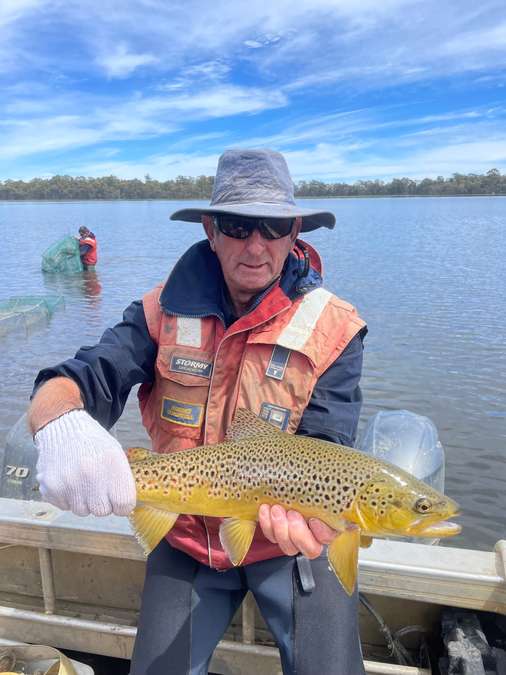Penstock Lagoon Fishery Performance Assessment 2023

As part of the commitment under the Tasmanian Inland Recreational Fishery Management Plan 2018-28, surveys to assess the trout fishery at Penstock Lagoon were completed in July 2023, with a secondary follow up survey in December. The report for these surveys is available on our website at Fisheries Performance Assessment Reports - Inland Fisheries Service (ifs.tas.gov.au)
In summary, a total of 314 brown trout were captured in July, indicating the lagoon holds a moderately high population of brown trout with an estimated 5,000 – 8,000 brown trout present. Of the 314 brown trout captured, 182 were males and 132 females. Brown trout over the minimum legal size of 400 mm on average weighed 1.23 kg. The largest brown trout was 2.24 kg and measured 595 mm. There were no fish over 600 mm, which similar to previous surveys. Most brown trout displayed good growth across all lengths, with fish over 500 mm length continued to show good weight gains.
Catch rates for brown trout have improved greatly since the early 2000’s and peaked at 1.9 fish per day during the 2017-18 season and are at 0.92 for the 2022-23 season, although our recent angler creel surveys suggest this is a little higher at 1.3 fish per day. These results are in-line with the management goals set for Penstock Lagoon, with the focus on providing a slightly larger quality brown trout fishery. The average catch rate for rainbow trout has generally remained around the long-term average of 0.3 fish per day. Catch and release rates for brown trout were high with 63 percent of fish returned and 55 percent for rainbow trout. This means we must be mindful of just how many fish we stock each year.
One of the really interesting results from the report was the survival of stocked wild adult brown trout from 2014 and 2016 transfers. Our data indicates these fish are surviving within the Penstock fishery for up to eight years. This means they are living to a minimum of eleven to twelve years old, (they are initially transferred at around three to four years old). This has allowed us to estimate the decrease in numbers of adult brown trout over their lifetime once stocked into the lagoon, as displayed in the attached graph.
Estimated decrease in numbers of wild adult brown trout from a nominal stocking of 2,000 fish, based on Penstock Lagoon survey data between 2014-23.